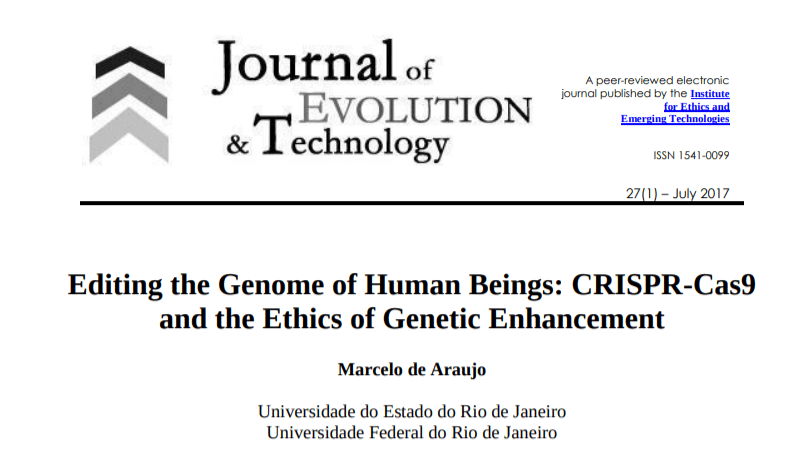But genetic modification of sperm, eggs, or embryos is a different story, even with a therapeutic goal (see GLP Ricki Lewis’ Designer babies? US scientists swap DNA in embryos, replacing mutation that causes heart problems). Scrutiny is even more intense if the intervention aims not to heal or prevent illness, but to genetically enhance children, striving to somehow “improve” them.
Could genetic modification endow a child with high intelligence, facility with learning languages, musical or artistic ability, or mathematical genius? And what would happen to a society in which wealth determines whose children are enhanced?
Gene editing creates class-ism
Kazuo Ishiguro’s new novel, Klara and the Sun, imagines a world in which some children are rendered exceptionally intelligent with genetic modification. The British author, recipient of the 2017 Nobel Prize in Literature, also wrote the 2005 dystopian masterpiece Never Let Me Go (and 2010 film), set at an English boarding school in the 1990s. In that alternate reality, people are cloned to provide organs for the wealthy, perishing proudly in young adulthood when they run out of spare parts.

Objection to the genetic enhancement of sperm, eggs, and embryos to engineer children is strong, with resistance in germline editing coming from the far left and the far right, and prompting discussion in Congress.
Klara and the Sun doesn’t specify exactly when in development the genetic intervention transpires, but presumably it’s early because most brain cells stop dividing about four months before birth. Somehow selected children – fetuses? — are “lifted,” undergoing a mysterious process that their parents choose for them that boosts intelligence sufficiently to qualify for college.
The unlifted form a lower class, adrift, some of their parents wallowing in guilt and regret.
It isn’t until page 243 of the 303-page novel that we learn, in a single sentence, the biotechnological basis of “lifting.” The context is a description of the lone institution of higher learning, Atlas Brookings, which sets aside a few spots in the freshman class for the rare unmodified students who somehow manage to excel. The college is “sufficiently generous and liberal to be open to all students of high caliber, even some who haven’t benefited from genetic editing.”
The technology is henceforth termed “AGE” — an acronym that is never translated.
Many gene-edited kids also benefit from having Artificial Friends; the unedited can’t afford them. Klara of the title is an AF — a robot propelled by artificial intelligence. The message of Klara and the Sun, which unspools from the dual society set-up, is that a robot can’t substitute for a person.
In the shop that displays AFs, “The Mother” steers 13-year-old sickly Josie to Klara. The unnamed illness also claimed an older sister, and hints suggest that it likely resulted from genetic editing gone awry. Klara is intended to be more than a playmate or teacher, and The Mother’s reason for selecting her harkens back to Never Let Me Go (spoiler alert).
Imagining Klara’s world
Ishiguro is a master of minimalism, painting his worlds with few words. As a result, Klara’s narration takes some getting used to for readers with merely human senses.
When stressed, Klara “partitions” her visual input into slices and boxes, temporarily losing the ability to integrate meaningful three-dimensional images from incoming patterns of photons. Faces shatter into random cones and cylinders, and once a crisis passes, eyes, noses, and mouths return. Her uncanny ability to observe, interpret, and remember is why The Mother chose her, to learn to replace, someday, the doomed Josie. (Another character is named Melania Housekeeper.)
Klara can’t detect odors and receives “special nourishment” from the sun (hence the title), so she doesn’t need to eat. I had more trouble relating to her than I did to Caeser in Rise of the Planet of the Apes or even the literal world of Forrest Gump.

The AFs have been so effective, so human-like, that sometime in an unspecified past in this unspecified place, they took over many jobs from ordinary people in an event termed “the substitutions.” And so arose a subclass of the substituted, forced to move into their own communities. Josie’s dad, an engineer, was substituted. He pretends to be happy, hiding a simmering and suppressed resentment, if not rage.
Altering DNA
Ishiguro uses the term “genetic editing,” which may have been intended to bridge the real terms gene editing and genome editing. He doesn’t use the term CRISPR, which is the technology that could alter more than one gene at once – intelligence is, after all, a multi-gene, complex trait.
How would genetic enhancement of intelligence via CRISPR work? Ishiguro doesn’t get into it, but as a geneticist, I can imagine.
One might edit genes that control the buildup and breakdown of brain chemicals like neurotransmitters, or counter the glomming of gunky proteins that herald dementia. Or genetic enhancement could use clues from studies that highlight markers throughout the genome, such as this one that identified 187 locations of intelligence genes.
Klara’s world holds environmental influences on intelligence steady, for the society is starkly regimented. The ambiance is eerily evocative of life under lockdown, although the author claims to have invented it pre-COVID.
Students learn remotely, viewing their professors for lessons on their ever-present “oblongs.” Lifted children study every weekday, but meet each other only rarely, at stilted planned gatherings that are nonetheless deemed essential for their eventual collegiate success.
Genetic enhancement in light of other inequities
The dystopia of Klara and the Sun rekindles the idea of genetic enhancement in a way that Marcelo de Araujo, associate professor of ethics and political philosophy at the State University of Rio de Janeiro, presciently discussed in a paper from 2017 in The Journal of Evolution & Technology, Editing the Genome of Human Beings: CRISPR-Cas9 and the Ethics of Genetic Enhancement. He compellingly argues that genetic enhancement isn’t very different from what’s already being done.
In the article, Araujo asks, “Would it be morally acceptable to edit human cells (whether somatic or germ cells) in order to engineer a child with enhanced human capacities such as increased strength, higher intelligence, or improved resistance to diseases?”
He raises the specter of what might happen to a society that enhances genomes: “People who do not want to enhance themselves, or cannot afford the costs of genetic enhancement, are likely to face discrimination and stigmatization in the future.”
Rick, Josie’s best friend and next door neighbor, personifies the classism. His mother lives in a constant state of torment over her decision not to “lift” Rick. He’s trying to get into Atlas Brookings through the tiny doorway available for the rare talented but unlifted students — a little like how my husband got into the State University of New York many years ago through “category B,” for those with imperfect scores and grades but other qualities.
Araujo argues that genetic enhancement is similar to other advantages, such as a healthy diet, quality sleep, and education. “These … may have long-lasting or even permanent effects on people’s lives as much as direct intervention in their genomes,” he writes.
Genetic enhancement and what it means to be ‘gifted’
Araujo asks us to consider labeling children as “gifted,” a practice that overlooks many students. “Children who are above the average, as far as cognitive performance is concerned, are sometimes called ‘gifted,’ as though nature itself had given them a sort of gift. Gifted children are usually encouraged to cultivate their intelligence to the utmost degree. This can be achieved by means of special classes or supplementary education,” Araujo writes, adding that the term expanded to “GATE,” for “gifted and talented education,” to include extraordinariness in non-academic areas.
I was one such child, placed early into “IGC” classes for “intellectually gifted children.” My husband was IGC too but must have lapsed before the state university stuck him in category B. (He turned out ok—PhD in chemistry despite a junior high science teacher who refused to recommend him for the fast-track in science as punishment for disruptive behavior, although he scored the highest in earth science that year.)
For a kid labeled “gifted” or in honors classes, all sorts of benefits ensue: learning to play an instrument, taking a foreign language, visiting museums. My parents wisely didn’t tell me what IGC meant. But in high school, I was mortified that my English classes were called “honor bright.”
Being given an advantage, whether special classes or tweaked genes, is in addition to the general increase in IQ seen in populations over time, a phenomenon called in psychology the Flynn effect, Araujo writes. The broad rise in IQ scores over time is attributed to society-wide changes, such as better nutrition, public education, higher-level jobs, and public health measures like vaccines and iodized salt.
Will the fact that we’ve all become data scientists since the pandemic began eventually echo in higher IQ scores? I think so!
Araujo sees genetic enhancement as part of the continuum of increasing our intelligence. He wrote in 2017, “If CRISPR-Cas9–or some other gene-editing technique ever becomes reliable and safe for therapeutic purpose, there are no good reasons to assume that CRISPR-Cas9 should not ever be used to help us live in cognitive environments that, in the future, are likely to be even more demanding than the cognitive environments in which we live today.”
Ironically, Araujo concludes by comparing genetic cognitive enhancement to how “antibiotics and mass vaccination have become indispensable in the attempt to make us fit to meet pathogens that we had not encountered before, or were only poorly equipped to fight with our natural, unenhanced immune system.”
Is the fact that “lifted” in the world of Josie and Klara rhymes with “gifted” in ours a coincidence? I doubt it. Ishiguro chooses his words with great care, and that’s why they are so powerful a reflection of what reality could become.
“Klara and the Sun” is a weird read; it’s not for everyone. But the big ideas conjured with a sparse narrative resonate for many days. And that’s a clear sign of an amazing storyteller.
Ricki Lewis has a PhD in genetics and is a science writer and author of several human genetics books. She is an adjunct professor for the Alden March Bioethics Institute at Albany Medical College. Follow her at her website or Twitter @rickilewis
































